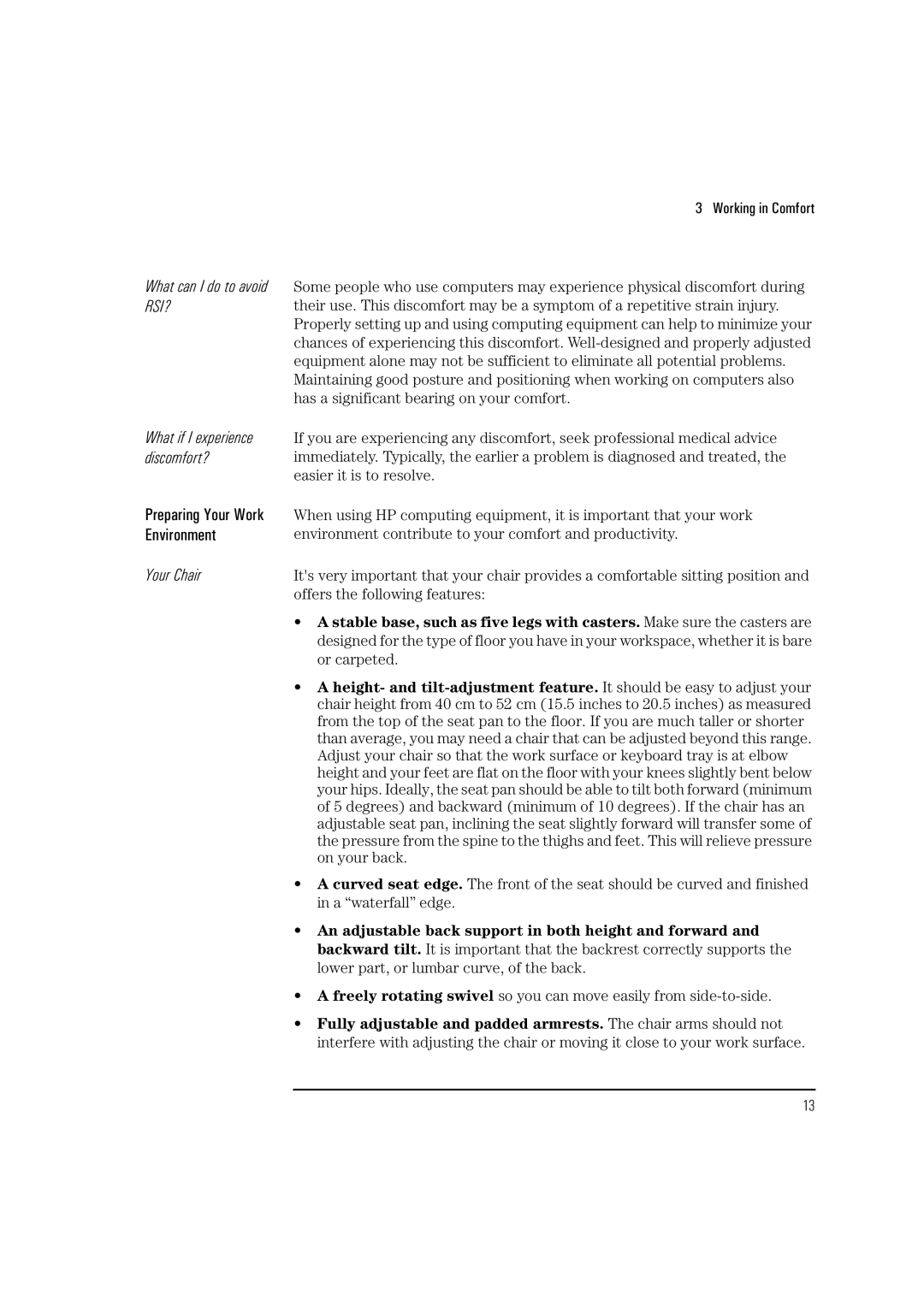3 Working in Comfort
What can I do to avoid RSI?
Some people who use computers may experience physical discomfort during their use. This discomfort may be a symptom of a repetitive strain injury. Properly setting up and using computing equipment can help to minimize your chances of experiencing this discomfort.
What if I experience discomfort?
Preparing Your Work Environment
Your Chair
If you are experiencing any discomfort, seek professional medical advice immediately. Typically, the earlier a problem is diagnosed and treated, the easier it is to resolve.
When using HP computing equipment, it is important that your work environment contribute to your comfort and productivity.
It's very important that your chair provides a comfortable sitting position and offers the following features:
•A stable base, such as five legs with casters. Make sure the casters are designed for the type of floor you have in your workspace, whether it is bare or carpeted.
•A height- and
•A curved seat edge. The front of the seat should be curved and finished in a “waterfall” edge.
•An adjustable back support in both height and forward and backward tilt. It is important that the backrest correctly supports the lower part, or lumbar curve, of the back.
•A freely rotating swivel so you can move easily from
•Fully adjustable and padded armrests. The chair arms should not interfere with adjusting the chair or moving it close to your work surface.
13
